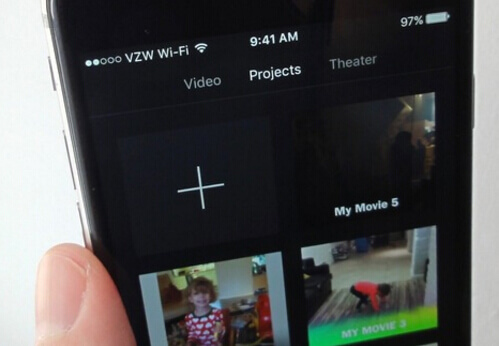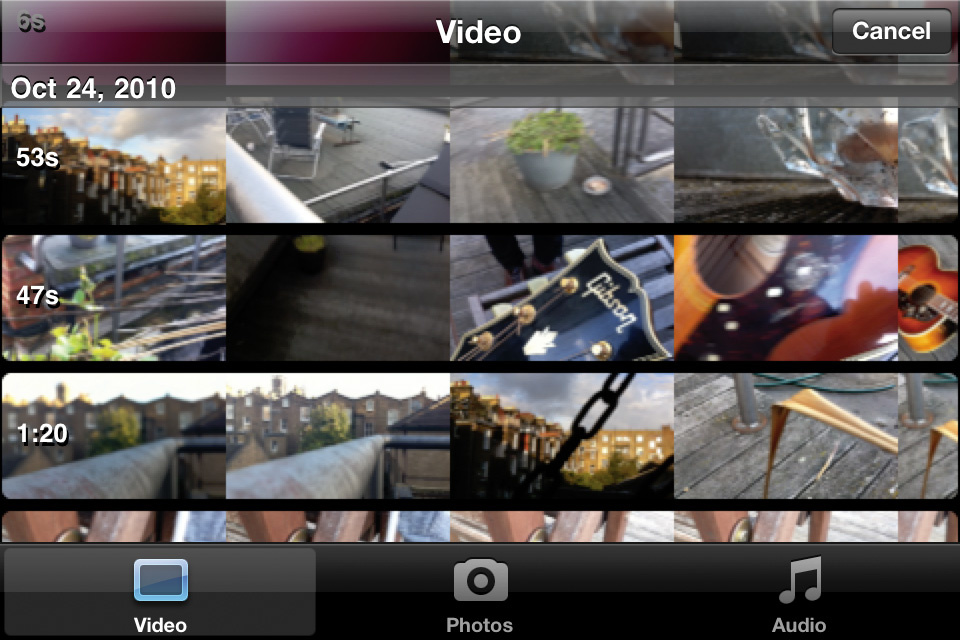
- #IMOVIE FOR IPHONE NOT INSERTING MUSIC MOVIE#
- #IMOVIE FOR IPHONE NOT INSERTING MUSIC UPDATE#
- #IMOVIE FOR IPHONE NOT INSERTING MUSIC PLUS#
MPEG-1 clips will lose audio when you export them as part of your iMovie project. Note: The tilde (~) represents your Home directory.Ĭheck to see if any of the video clips you have imported are in the MPEG-1 format.
#IMOVIE FOR IPHONE NOT INSERTING MUSIC UPDATE#
If not, check with the manufacturer of the disabled plugin to see if an update is available. Remove them if present, log out, and log back in.

Play the newly imported footage and see if you now have audio.Ĭheck /Library/QuickTime/ and ~/Library/QuickTime/ for any third-party plugins. Quit and reopen iMovie, then reimport the footage. Quit and reopen iMovie, then check the clip to see if it now plays with audio. Drag the video to the timeline and head to the Crop icon, then Crop to Fill in the toolbar above the viewer.
#IMOVIE FOR IPHONE NOT INSERTING MUSIC PLUS#
Make sure the computer's audio is not muted. Open iMovie and tap the plus sign to start a new movie, then import your video you want to change the aspect ratio. See if the volume in iMovie is set to its lowest, if this is the case, set the volume slider to maximum. Make sure the audio track has not been muted in the timeline. And with its ease of use, it does have the potential to become a common method for those longer movies you want to share with a social platform, or with friends and family.If your iMovie project appears to be missing audio tracks when you play, import, or export a project, try these steps first: However, it’s a significant update that’s going to take advantage of the cameras and the content that every iPhone and iPad user has access to. It might seem like a strange distinction at first (why not just have all the audio in the foreground), but theres a reason: Foreground audio clips, which. With Instagram and TikTok already showcasing this feature, it would have made sense for this to come to iMovie 3.0.
#IMOVIE FOR IPHONE NOT INSERTING MUSIC MOVIE#
It looks like an evolution of the trailer feature above, with full movies now taking advantage of this.īut, it is disappointing that there’s no way to add audio transcriptions for when you’re editing a clip for a Storyboard or Magic Movie project. 3) Then pick from Soundtracks, My Music, or Sound Effects. 1) Tap the plus sign button on the top right of the screen. Open your iMovie Project and then follow these steps for iPad. Having seen the features in action, it’s surprising how few taps and clicks are required to make a movie from start to finish. While iMovie is similar to iPhone on iPad, adding music and sound effects is slightly different.

Both FB and YT have flagged the video, saying that it contains copyrighted material. This is video that I shot but I used some of the background music that comes bundled with the iMovie software. Not only is it perfect for editing quick videos for sharing on your social media platforms, but it’s also powerful enough to do advanced video editing for all of your iPhone movies. I used iMovie '11 to edit some video and then uploaded it to Facebook and YouTube.

IMovie is something that goes as far back as the iLife suite in the early 2000s, where you would have a suite of apps such as iMovie, iPhoto, iWeb, and iDVD, all to help create content on your Mac.īut since iMovie’s appearance on iOS in 2010, followed by an iPad release in 2011, its usage has changed, which makes sense for these new features to arrive on iPhone and iPad first. iMovie is a powerful app that comes with your iPhone. This looks to be the next step in this feature that’s been available on macOS since 2011. Magic Movie reminds us of its trailer feature (opens in new tab) in iMovie on macOS, where you can create small movies of movie trailers with your clips. It looks to automate how you can create a movie in a half-hour, without going through many menus to achieve the same result. You can also pick a soundtrack, such as a file from Garageband, Apple Music, or the Files app for example, and iMovie 3.0 will also adapt to this to fit the video, similar to TikTok and Instagram’s takes. Toggle the Theme Music button to the on position. Scroll through the themes and choose one to experiment with. Tap edit and then the settings icon in the bottom right corner. There’s also helpful descriptions of where to add certain clips, whether it’s for a close-up shot or something else to help fit the movie. If you don’t have any videos in iMovie, tap the + icon to choose one from your camera roll. This feature will analyze your clips for dialogue and movement and will arrange them to fit the movie you’ve picked. You can re-arrange and delete clips, and the feature will adapt while keeping the theme of the project intact.

Meanwhile, the Magic Movie feature allows you to select an album of photos and videos, and will compile these into a movie.


 0 kommentar(er)
0 kommentar(er)
